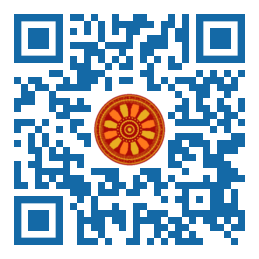
:: International Transaction Journal of Engineering, Management, & Applied Sciences & Technologies
http://TuEngr.com

ISSN 2228-9860
eISSN 1906-9642
CODEN: ITJEA8
FEATURE PEER-REVIEWED ARTICLE
Vol.13(4)(2022) |
Depression Evaluation via Heart Rate Variability and Body Temperature
 Eyad Talal Attar (Department of Electrical and Computer Engineering, King Abdulaziz University, Jeddah, 21589, KINGDOM of SAUDI ARABIA).
Eyad Talal Attar (Department of Electrical and Computer Engineering, King Abdulaziz University, Jeddah, 21589, KINGDOM of SAUDI ARABIA).
Disciplinary: Biomedical Instrumentation, Signal Processing, Mental Disorder.
doi: 10.14456/ITJEMAST.2022.65
Keywords: ECG; Body temp; Depression check; Autonomic nervous system (ANS); Biomarkers; Heart rate variability (HRV); Depression assessment; Electrocardiography; Depressive disorder.
AbstractMental status tasks influence several neurophysiological measures. Biomedical instrumentation is widely used to measure the behavior of the human body and calculate the relative physiological responses to cognitive tasks. There is a common connection between heart rate variability (HRV) and ANS activity. In addition, the skin conductance peak characteristics (SC) from electrodermal activity (EDA) and skin temperature (SKT) modifications can also affect ANS activity As such, the autonomic nervous system (ANS) can easily influence depression. Previous efforts to study and apply HRV features as biomarkers of depression are encouraging. This study includes HRV analysis and temperature measurements during a depression task and is designed to explore the connection between electrocardiography (ECG) and body temperature. Regarding HRV analysis, previous research has shown a decrease in high-frequency (HF) features, as well as body temperature decreases during the day, in patients with depression. Five healthy college students with no health issues participated in the study. An ECG was recorded while relaxing and while performing the Stroop Color-Word task; body temperatures were recorded periodically. Results showed that there were six significant relationships between HRV features and body temperature associated with depression. In addition, short-term meditation had a positive influence, and this protocol could be useful in depressive disorders.Paper ID: 13A4B
Cite this article:
Attar, E. T. (2022). Depression Evaluation via Heart Rate Variability and Body Temperature. International Transaction Journal of Engineering, Management, & Applied Sciences & Technologies, 13(4), 13A4B, 1-9. http://TUENGR.COM/V13/13A4B.pdf DOI: 10.14456/ITJEMAST.2022.65
References
- R. Hartmann, F. M. Schmidt, C. Sander, and U. Hegerl, "Heart rate variability as indicator of clinical state in depression," Front. Psychiatry, vol. 10, 2019.
- K. W. Choi and H. J. Jeon, "Heart Rate Variability for the Prediction of Treatment Response in Major Depressive Disorder," Front. Psychiatry, vol. 11, 2020.
- F. A. Jain et al., "Heart rate variability and treatment outcome in major depression: A pilot study," Int. J. Psychophysiol., vol. 93, no. 2, pp. 204-210, 2014.
- B. Francesco et al., "Linear and nonlinear heart rate variability indexes in clinical practice," Comput. Math. Methods Med., 2012.
- Y. Yaniv and A. E. Lyashkov, "The Fractal-like Complexity of Heart Rate Variability beyond Neurotransmitters and Autonomic Receptors: Signaling Intrinsic to Sinoatrial Node Pacemaker Cells," Cardiovasc. Pharmacol. Open Access, vol. 2, no. 3, 2013.
- T. Laitio, J. Jalonen, T. Kuusela, and H. Scheinin, "The role of heart rate variability in risk stratification for adverse postoperative cardiac events," Anesth. Analg., vol. 105, no. 6, pp. 1548-1560, 2007.
- Z. He, "The control mechanisms of heart rate dynamics in a new heart rate nonlinear time series model," Sci. Rep., vol. 10, no. 1, 2020.
- H. V. Huikuri and P. K. Stein, "Clinical application of heart rate variability after acute myocardial infarction," Front. Physiol., vol. 3 FEB, 2012.
- K. Li, H. Rudiger, and T. Ziemssen, "Spectral Analysis of Heart Rate Variability: Time Window Matters," Front. Neurol., vol. 10, 2019.
- F. Shaffer and J. P. Ginsberg, "An Overview of Heart Rate Variability Metrics and Norms," Front. Public Heal., vol. 5, 2017.
- J. L. Rausch et al., "Depressed Patients Have Higher Body Temperature: 5-HT Transporter Long Promoter Region Effects," Neuropsychobiology, vol. 47, no. 3, pp. 120-127, 2003.
- R. M. Escorihuela et al., "Reduced heart rate variability predicts fatigue severity in individuals with chronic fatigue syndrome/myalgic encephalomyelitis," J. Transl. Med., vol. 18, no. 1, 2020.
- C. Dell'Acqua, E. Dal Bo, S. Messerotti Benvenuti, and D. Palomba, "Reduced heart rate variability is associated with vulnerability to depression," J. Affect. Disord. Reports, 2020.
- D. Jangpangi, S. Mondal, R. Bandhu, D. Kataria, and A. Gandhi, "Alteration of heart rate variability in patients of depression," J. Clin. Diagnostic Res., vol. 10, no. 12, pp. CM04-CM06, 2016.
- J. Markela-Lerenc, S. Kaiser, P. Fiedler, M. Weisbrod, and C. Mundt, "Stroop performance in depressive patients: A preliminary report," J. Affect. Disord., vol. 94, no. 1-3, pp. 261-267, 2006.
- F. Scarpina and S. Tagini, "The stroop color and word test," Front. Psychol., vol. 8, 2017.
- C. E. Englund, D. L. Reeves, C. A. Shingledecker, D. R. Thorne, and K. P. Wilson, "Unified Tri-Service Cognitive Performance Assessment Battery (UTC-PAB). 1. Design and Specification of the Battery," 1987.
- J. W. Hughes and C. M. Stoney, "Depressed Mood Is Related to High-Frequency Heart Rate Variability During Stressors," Psychosom. Med., vol. 62, no. 6, pp. 796-803, 2000.
Other issues:
Vol.13(4)(2022)
Vol.13(3)(2022)
Vol.13(2)(2022)
Archives
Call-for-Papers
Call-for-Scientific PapersCall-for-Research Papers: ITJEMAST invites you to submit high quality papers for full peer-review and possible publication in areas pertaining engineering, science, management and technology, especially interdisciplinary/cross-disciplinary/multidisciplinary subjects.
To publish your work in the next available issue, your manuscripts together with copyright transfer document signed by all authors can be submitted via email to Editor @ TuEngr.com (no space between). (please see all detail from Instructions for Authors)
Publication and peer-reviewed process:
After the peer-review process (4-10 weeks), articles will be on-line published in the available next issue. However, the International Transaction Journal of Engineering, Management, & Applied Sciences & Technologies cannot guarantee the exact publication time as the process may take longer time, subject to peer-review approval and adjustment of the submitted articles.